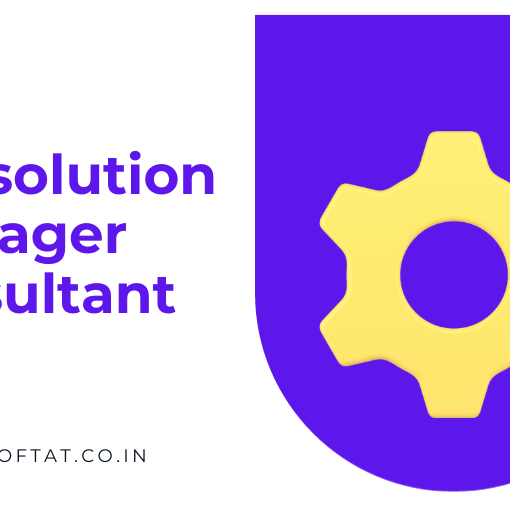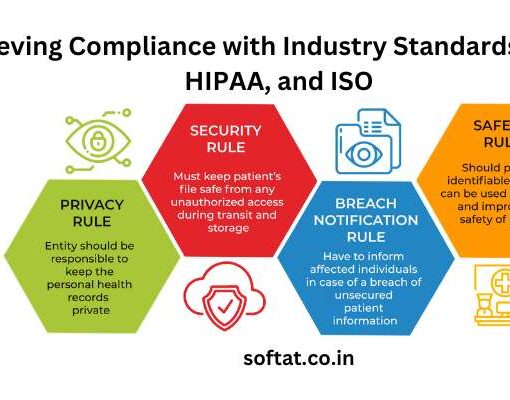Robotic Process Automation (RPA) is a cutting-edge technology that enables organizations to automate repetitive and time-consuming tasks, freeing up employees to focus on more strategic and value-adding activities. With the increasing use of SAP systems in various industries, the integration of RPA with SAP is becoming increasingly important. In this blog, we will explore the benefits of RPA for SAP and how organizations can implement it effectively.
Benefits of RPA for SAP:
Increased Efficiency and Productivity: One of the main benefits of RPA for SAP is the increased efficiency and productivity that it brings. By automating manual and repetitive tasks, organizations can free up employees to focus on more strategic and value-adding activities. This results in increased productivity and improved overall performance.
Enhanced Data Accuracy: RPA eliminates the possibility of human error in manual processes, leading to increased data accuracy. This is particularly important in SAP systems, where data accuracy is critical for effective decision-making and business operations.
Improved Compliance: RPA for SAP can help organizations to meet compliance requirements by automating manual and repetitive tasks that are often associated with compliance. This ensures that processes are performed consistently and in accordance with regulatory requirements, reducing the risk of non-compliance and associated penalties.
Cost Savings: By automating manual and repetitive tasks, RPA for SAP can lead to significant cost savings for organizations. This is because automation reduces the need for manual labor, reducing the cost of labor and increasing efficiency.
Improved Customer Service: RPA for SAP can also help organizations to improve customer service by automating manual tasks associated with customer service. This results in faster response times and improved customer satisfaction.
How to Implement RPA for SAP:
Define Your Processes: The first step in implementing RPA for SAP is to define the processes that you want to automate. This should involve a thorough analysis of your existing processes and the identification of areas where automation can provide the greatest benefits.
Choose the Right RPA Tool: Once you have defined your processes, you need to choose the right RPA tool to automate them. There are a number of RPA tools available on the market, each with its own features and capabilities. When choosing an RPA tool, it is important to consider your specific requirements and the features that are most important to your organization.
Integrate RPA with SAP: The next step is to integrate your RPA tool with your SAP system. This will allow you to automate processes within SAP, and to automate the transfer of data between SAP and other systems. It is important to choose an RPA tool that is compatible with your SAP system and to work closely with your RPA vendor to ensure a smooth integration.
Test and Validate Your Automated Processes: Once your RPA tool has been integrated with SAP, it is important to test and validate your automated processes to ensure that they are functioning as expected. This should involve a thorough analysis of the data generated by your RPA tool and a comparison of this data with your existing processes.
Implement and Monitor: The final step is to implement your RPA solution and monitor its performance. This should involve regular monitoring of your automated processes to ensure that they are functioning as expected, and to identify any areas where improvement is required.
What does RPA do?
Robotic process computerization innovation handles various exercises, including:
Manual and dull errands: Corporations with information from different sources, like Microsoft Succeed, merchant entries, and different sources
High-volume errands: Interaction steps that should be finished a large number of times, for instance information relocations and endorsement work processes
Various framework errands: Admittance to various applications, similar to Web applications, RP arrangements, outsider programming, and others
RPA reception is developing at twofold digit rates. Situated as the quickest developing portion of the worldwide undertaking programming market, income spend for RPA was projected to arrive at US$1.89B in 2021, an increment of 19.5% from 2020.
Which RPA tool is best for SAP?
There are several Robotic Process Automation (RPA) tools available in the market that can be used for automating processes in SAP. The selection of the best RPA tool for SAP depends on various factors such as specific requirements, budget, ease of use, integration capabilities, and scalability. Here are a few popular RPA tools that are commonly used for SAP automation:
- UiPath: UiPath is a leading RPA tool that offers strong capabilities for automating SAP processes. It provides pre-built activities and connectors specifically designed for SAP automation. UiPath supports both SAP GUI automation and SAP Business Application Programming Interface (BAPI) integration, making it a popular choice for SAP automation.
- Automation Anywhere: Automation Anywhere is another widely used RPA tool that supports SAP automation. It provides SAP-specific automation commands and pre-built connectors for seamless integration with SAP systems. Automation Anywhere offers features like screen scraping, data extraction, and workflow automation for SAP processes.
- Blue Prism: Blue Prism is an enterprise-grade RPA tool that also supports SAP automation. It provides dedicated connectors and activities for SAP integration, allowing users to automate SAP processes efficiently. Blue Prism offers a visual and code-free development environment for building SAP automation workflows.
- Pega: Pega is a low-code RPA platform that can be used for automating SAP processes. It provides SAP-specific adapters and connectors to interact with SAP systems. Pega offers a comprehensive set of tools for designing, deploying, and managing SAP automation solutions.
It’s important to evaluate each tool based on your specific requirements and conduct a proof of concept (POC) or trial to assess its suitability for your SAP automation needs. Additionally, consider factors like community support, documentation, and training resources while selecting an RPA tool for SAP automation.
How RPA is used in ERP?
Robotic Process Automation (RPA) can be effectively used in conjunction with Enterprise Resource Planning (ERP) systems to automate various tasks and processes. Here are some common use cases of RPA in ERP:
- Data Entry and Migration: RPA can automate the process of entering and migrating data into the ERP system. For example, it can extract data from spreadsheets, databases, or other sources and populate the corresponding fields in the ERP system, reducing manual effort and minimizing the risk of errors.
- Order Processing: RPA can streamline order processing by automatically capturing and processing orders received through various channels. It can extract relevant data, validate order details, update inventory levels, generate invoices, and even initiate fulfillment processes within the ERP system.
- Invoice Processing: RPA can automate the invoice processing workflow, including tasks such as invoice data extraction, validation, matching with purchase orders, and updating financial records in the ERP system. This helps improve accuracy, reduce processing time, and enhance overall efficiency.
- Report Generation: RPA can generate reports by extracting data from ERP systems and other relevant sources. It can consolidate data, apply calculations or transformations, and present the information in predefined templates or dashboards. This saves time and effort involved in manual report generation.
- Data Synchronization and Integration: RPA can facilitate data synchronization and integration between ERP systems and other applications or databases. It can automatically transfer data, reconcile discrepancies, and ensure consistency across different systems, enabling real-time updates and accurate data sharing.
- Master Data Management: RPA can assist in managing master data within ERP systems. It can automate processes related to data creation, update, and maintenance for entities such as customers, suppliers, products, or employees. RPA can ensure data accuracy and enforce data governance rules within the ERP system.
By leveraging RPA in ERP systems, organizations can streamline processes, reduce manual errors, improve data accuracy, enhance productivity, and free up employees to focus on more value-added tasks. It enables automation of repetitive and rule-based activities, leading to increased efficiency and cost savings.
Conclusion:
RPA for SAP can bring significant benefits to organizations, including increased efficiency and productivity, enhanced data accuracy, improved compliance, cost savings, and improved customer service. To achieve these benefits, organizations need to implement RPA for SAP effectively, by defining their processes, choosing the right RPA tool, integrating R.





